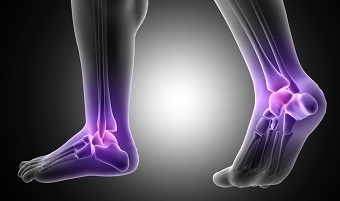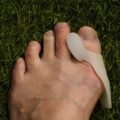Understanding toe injuries is crucial for anyone who has ever stubbed a toe and wondered about the severity. A broken toe can disrupt daily activities significantly, and knowing the healing process can help manage expectations and recovery effectively.
Signs of Healing
Recognizing the signs of healing in a broken toe is essential for monitoring recovery progress and knowing when it’s safe to resume normal activities. Here are key signs that indicate your toe is healing effectively:
Reduced Swelling: One of the first signs of healing is a decrease in swelling around the injured toe. Initially, the toe may be noticeably swollen, but as healing progresses, the swelling should gradually diminish. Reduced swelling indicates that the inflammation is subsiding, and the healing process is underway.
Improvement in Pain Levels: As the toe heals, the intensity of pain typically decreases. Initially, there may be significant pain, especially with movement or pressure on the toe. However, as healing progresses, you should notice a reduction in pain levels. Pain that becomes more manageable and less constant is a positive sign of healing.
Decreased Bruising: Bruising is common after a broken toe due to blood pooling under the skin. As the toe heals, the bruising will fade. Initially, the bruise may appear dark red or purple, but over time, it should change to lighter shades and eventually disappear. Diminished bruising indicates that the body is reabsorbing the trapped blood, a part of the healing process.
Improved Mobility: Healing toes typically regain mobility and range of motion as the tissues heal and swelling decreases. You should notice that you can move your toe more easily without experiencing significant pain or stiffness. Gradual improvement in mobility is a positive sign that the healing process is progressing as expected.
Normal Color: Initially, a broken toe may appear discolored due to bruising and swelling. As healing occurs, the toe’s color should return to its normal hue. The skin around the toe should look healthy without signs of redness, excessive warmth, or unusual discoloration.
Stable Alignment: If your broken toe required realignment or splinting, signs of healing include maintaining stable alignment. The toe should remain straight and aligned with adjacent toes without noticeable deformity or misalignment.
Improved Functionality: Ultimately, a healed toe should regain functionality. This means you can bear weight on the toe without significant pain, walk normally, and perform daily activities without limitations related to the injury.
What is the fastest way to heal a broken toe?
The fastest way to heal a broken toe involves a combination of proper medical treatment, self-care measures, and lifestyle adjustments to support the healing process. Here are steps you can take to promote faster healing:
- Seek Medical Attention: As soon as you suspect a broken toe, seek medical evaluation. A healthcare provider can assess the severity of the fracture, provide necessary interventions such as X-rays for diagnosis, and recommend a treatment plan tailored to your specific injury.
- Immobilization: Stabilizing the broken toe is crucial for faster healing. Your healthcare provider may recommend buddy taping (taping the injured toe to an adjacent toe) or using a splint to keep the toe in place. Immobilization prevents further damage and allows the bones to heal properly.
- Rest and Elevate: Minimize weight-bearing activities on the injured toe and elevate your foot above heart level whenever possible. Resting the toe reduces strain and promotes faster healing by improving blood circulation and reducing swelling.
- Ice Therapy: Apply ice packs to the injured toe for 15-20 minutes several times a day during the first few days after the injury. Ice helps reduce pain, swelling, and inflammation, speeding up the healing process.
- Pain Management: Take over-the-counter pain relievers such as ibuprofen or acetaminophen as directed by your healthcare provider to manage pain and discomfort. Follow the recommended dosage and duration.
- Follow Treatment Recommendations: Adhere to your healthcare provider’s treatment plan, including any prescribed medications, exercises, or physical therapy. Completing your treatment regimen as advised can expedite healing and reduce complications.
- Protective Footwear: Wear stiff-soled shoes or protective footwear that provides support and prevents further injury to the broken toe. Avoid wearing tight or constricting shoes that can exacerbate discomfort.
- Monitor Healing Progress: Keep track of changes in pain levels, swelling, bruising, and mobility in the injured toe. If you notice any worsening symptoms or concerns, contact your healthcare provider promptly for evaluation.
- Healthy Lifestyle: Maintain a healthy diet rich in nutrients essential for bone health, such as calcium, vitamin D, and protein. Stay hydrated and avoid habits like smoking, which can impair healing.
- Physical Therapy: If recommended by your healthcare provider, engage in physical therapy exercises to strengthen the muscles around the toe, improve flexibility, and enhance overall toe function.
When Healing Takes Longer
Some factors can slow down the healing process:
- Severity of the Fracture: Complex fractures, such as comminuted fractures (where the bone breaks into multiple pieces) or fractures involving the joint, often require more time to heal compared to simple fractures.
- Poor Circulation: Conditions like diabetes can affect blood flow, slowing healing.
- Inadequate Rest: Not giving the toe enough time to heal can prolong recovery.
- Smoking: Nicotine can impede bone healing.
- Age: Age can influence healing time, with older adults generally experiencing slower healing compared to younger individuals.
- Malnutrition: Lack of essential nutrients, particularly calcium and vitamin D, can delay recovery.
- Noncompliance with Treatment: Failure to follow medical advice, such as not wearing recommended footwear, skipping physical therapy exercises, or not taking prescribed medications, can hinder healing progress and extend recovery time.
- Underlying Health Conditions: Pre-existing health conditions such as diabetes, peripheral vascular disease, or osteoporosis can impair the body’s ability to heal effectively.
Initial Steps After Injury
Immediate care for a broken toe involves rest, ice, compression, and elevation (RICE). Seeking medical attention is crucial if the pain is severe, the
toe looks deformed, or you can’t bear weight on it.
Complications and Delays in Healing
Complications and delays in healing can occur with a broken toe, especially if the injury is severe or not managed properly. Understanding these potential challenges is essential for a successful recovery.
- Infection: A broken toe, especially if it breaks the skin (compound fracture), can lead to infection. Signs of infection include increased pain, redness, warmth, and discharge from the injury site. Prompt medical attention is crucial to prevent complications.
- Delayed Healing: Factors such as age, overall health, type of fracture, and adherence to treatment can influence healing time. Delayed healing may occur if the toe is not immobilized adequately or if there are underlying health issues affecting bone health.
- Chronic Pain: Some individuals may experience persistent pain even after the fracture has healed. This can be due to nerve damage, joint stiffness, or improper alignment during healing.
- Arthritis: Fractures involving the joint can increase the risk of developing arthritis in the affected toe over time. Proper alignment and rehabilitation can help mitigate this risk.
- Malunion: If the broken bones heal in a misaligned or incorrect position (malunion), it can lead to deformity, functional impairment, and the need for corrective surgery.
- Poor Blood Circulation: Conditions like diabetes or peripheral vascular disease can impair blood flow to the injured toe, slowing down the healing process.
- Smoking: Nicotine and other chemicals in tobacco can interfere with bone healing by reducing blood supply and impairing cell function.
- Inadequate Rest: Not giving the toe sufficient rest and protection can prolong healing. Continuously putting weight on the injured toe or engaging in high-impact activities can delay recovery.
- Nutritional Deficiencies: A lack of essential nutrients, particularly calcium, vitamin D, and protein, can hinder bone healing and tissue repair.
How long do the effects last?
The effects of a broken toe can vary depending on several factors, including the severity of the fracture, the type of treatment received, and individual healing capabilities. Generally, here’s an overview of how long the effects may last:
- Pain and Discomfort: Initially, pain and discomfort can be significant, especially in the first few days after the injury. With proper pain management and rest, the intensity of pain typically decreases over time. Most people experience significant improvement in pain within the first two weeks. However, some discomfort or mild pain may persist during the healing process, especially with activities that put strain on the toe.
- Swelling and Bruising: Swelling and bruising are common symptoms of a broken toe and are typically most pronounced in the first week after the injury. The swelling gradually reduces over the following weeks as the toe heals. Bruising may take a bit longer to fade completely but should improve significantly within a few weeks.
- Mobility and Range of Motion: Initially, mobility and range of motion in the affected toe may be limited due to pain, swelling, and the need to protect the injury. As healing progresses, mobility improves gradually. Most people can resume normal activities, including walking without significant limitations, within 4 to 6 weeks for simple fractures. However, it may take longer for more complex fractures or if complications arise.
- Healing Time: The actual time it takes for a broken toe to heal varies based on factors such as the type of fracture and the individual’s healing capacity. Simple fractures typically heal within 4 to 6 weeks, while more complex fractures may take longer, ranging from 6 to 8 weeks or even several months in severe cases.
- Long-Term Effects: In some cases, there may be lingering effects such as mild stiffness or occasional discomfort, especially during certain movements or in cold weather. However, with proper care and rehabilitation, these effects are usually minimal.
When to Return to Normal Activities After a Broken Toe
Returning to normal activities after a broken toe depends on several factors, including the severity of the fracture, the individual’s healing progress, and medical advice. Here are some general guidelines:
- Consultation with Healthcare Provider: Before resuming normal activities, it’s crucial to consult with your healthcare provider. They can assess your toe’s healing progress, provide guidance based on the type of fracture, and recommend a suitable timeline for returning to activities.
- Pain and Discomfort: Pay attention to your pain levels and discomfort. If you can walk without significant pain and your toe feels stable, it may be a sign that you’re ready to gradually increase activity levels.
- Mobility and Range of Motion: As your toe heals, you should notice improvements in mobility and range of motion. Being able to move your toe without excessive pain or stiffness is a positive indicator for returning to normal activities.
- Follow Rehabilitation Recommendations: If you’ve been undergoing physical therapy or rehabilitation exercises, follow the recommendations provided by your healthcare provider or physical therapist. These exercises help strengthen the toe and improve flexibility, making it easier to resume regular activities.
- Protective Measures: Consider using protective measures such as stiff-soled shoes or toe splints during the initial return to activities. These can provide support and reduce the risk of re-injury as your toe continues to heal.
- Gradual Progression: Ease back into activities gradually. Start with low-impact exercises or tasks that don’t put excessive strain on the toe. Monitor how your toe responds and adjust activity levels accordingly.
- Listen to Your Body: Pay attention to any signs of discomfort or pain during activities. If you experience increased pain or swelling, it may indicate that you’re pushing too hard or that your toe needs more time to heal.
- Avoid High-Impact Activities: Steer clear of activities that involve jumping, running, or sudden movements that could put undue stress on the healing toe. Give your toe time to strengthen before engaging in high-impact exercises.
- Medical Clearance: Before returning to sports or strenuous activities, obtain clearance from your healthcare provider. They can evaluate your toe’s stability and ensure that it’s safe for you to resume more intense physical activities.
FAQs about How long does a broken toe take to heal?
Yes, many broken toes can heal on their own with proper care. Ensure you immobilize the toe, rest, manage pain, and consult a healthcare provider for proper guidance.
Signs of proper healing include reduced pain, decreased swelling and bruising, improved mobility, normal appearance, and absence of infection. If you notice any unusual symptoms, consult your healthcare provider.
Keep your toe taped for about 2 to 4 weeks, or as advised by your doctor. Taping helps stabilize the toe and prevent further injury during the healing process.
Some discomfort may persist, but severe pain should subside within a few weeks. If the pain continues or worsens, consult your healthcare provider to rule out complications.
Conclusion
Recovering from a broken toe requires patience and proper care. Understanding the types of fractures, following medical advice, and taking preventive measures can ensure a smooth healing process.





